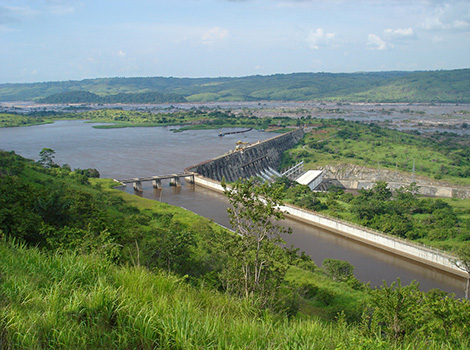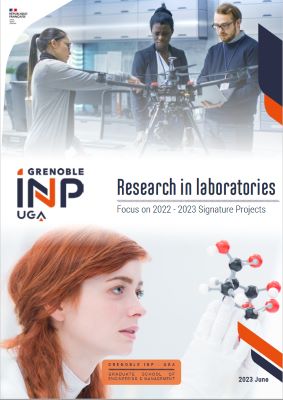Several technologies are currently being developed to provide rural or remote areas with electricity. One example is micro hydropower plants which use the pressure head differences of streams to operate a turbine.
As part of their end-of-study project carried out at Alstom, Anthony Seyve and Géraud Philippon, two engineers who graduated from Ense3 in 2012, worked on the design of a turbine that was simple and inexpensive to produce for developing countries.
Firstly, they carried out a market study that confirmed the interest of the small hydroelectric power plant in Central Africa which has low energy requirements and significant water resources. At the same time, they worked on a digital mock-up of a Banki-type turbine well suited to the remote areas of developing countries due to how simple they are to manufacture, operate and maintain while being the most inexpensive. “We studied the flow in the turbine and analysed the recirculation phenomena, explained Géraud Philippon. An initial digital mock-up allowed us to resolve a few problems after which we created a turbine based on the characteristics of the potential sites.”
What remains to be done now is to define and to test the hydraulic areas of improvement in order to optimise the turbine to make it operational. More to follow.

As part of their end-of-study project carried out at Alstom, Anthony Seyve and Géraud Philippon, two engineers who graduated from Ense3 in 2012, worked on the design of a turbine that was simple and inexpensive to produce for developing countries.
Firstly, they carried out a market study that confirmed the interest of the small hydroelectric power plant in Central Africa which has low energy requirements and significant water resources. At the same time, they worked on a digital mock-up of a Banki-type turbine well suited to the remote areas of developing countries due to how simple they are to manufacture, operate and maintain while being the most inexpensive. “We studied the flow in the turbine and analysed the recirculation phenomena, explained Géraud Philippon. An initial digital mock-up allowed us to resolve a few problems after which we created a turbine based on the characteristics of the potential sites.”
What remains to be done now is to define and to test the hydraulic areas of improvement in order to optimise the turbine to make it operational. More to follow.

SUMMARY
- Imagining the hydraulic machines of the future
- Hydroelectricity: an energy of the future
- Innov'hydro: a multi-disciplinary project
- "We will not be the best on our own"
- Tidal turbines in rivers and at sea
- LCIS transforms RFID labels into sensors
- Micro hydropower plants to provide rural areas with electricity





